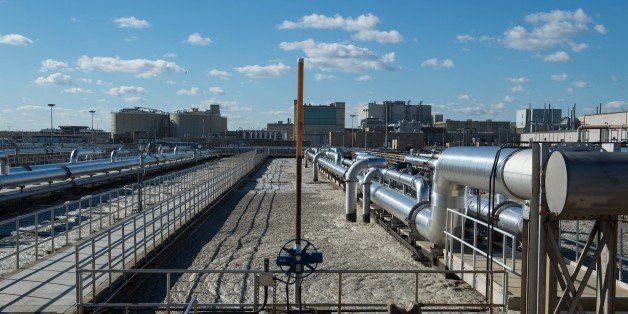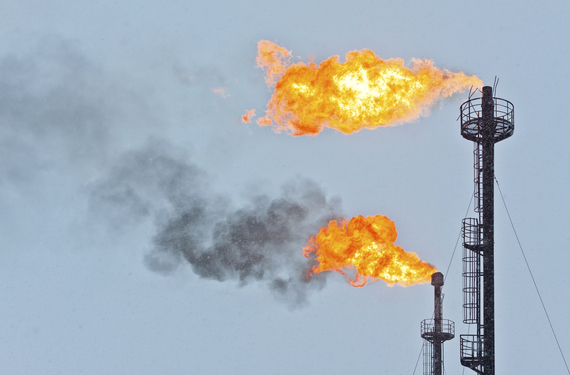
As I write this, a massive methane leak from a ruptured natural gas storage facility in California is causing, every day, as much climate damage over the next 20 years as seven million cars on the road.
And as the climate talks here in Paris continued over the weekend, The Washington Post noted an increased focus on short-lived climate pollutants such as methane. This focus is an absolute necessity: If we want to solve climate change, we have no choice but to tackle methane emissions.
According to data from the Intergovernmental Panel on Climate Change, methane pollution is responsible for 25 percent of the warming our planet is experiencing today. It has this incredible impact because it's 84 times more potent than carbon dioxide over the short term.
The largest industrial source of methane emissions is the oil and gas industry, and their environmental impact is staggering: A short-term climate impact equivalent to 40 percent of global coal combustion. That's a lot of potential benefit to the climate, if we can make significant reductions.
That math is why the danger of unchecked methane pollution also offers us such an opportunity.
Better data is on the way.
The need for better methane data is something I heard a lot about several years ago when I was part of a panel looking at the environmental impacts of natural gas.
That's why Environmental Defense Fund brought together close to 50 leading academic and scientific intuitions and 50 oil and gas companies to launch 16 discrete studies to better quantify oil and gas methane emissions in the United States. More than two dozen peer-reviewed papers have been published from this effort, the latest just this week in theProceedings of the National Academy of Sciences.
Based on this model, EDF announced a collaborative effort this week with three international oil and gas producers to work toward a series of rigorous, scientific studies to understand global oil and gas methane emissions.
What we've found so far.
Studies in the U.S., Canada and Mexico indicate we can cut 40 percent of methane pollution for about one cent per thousand cubic feet.
And industry is confirming that meaningful reductions can be achieved for pennies on the dollar. This past year, Noble Energy, a large oil and gas producer in Colorado, spent just $3 million of its $1 billion in capital budget - three tenths of one percent -- to comply with state regulations that deliver a 40 percent reduction.
As a whole, the U.S. has committed to a 40-50 percent oil and gas methane reduction by 2025 while Alberta, Canada, has committed to a 45-percent reduction in the same time frame, both goals backed by regulations.
These are encouraging and necessary measures, but more is needed. The International Energy Agency says it will be a "missed opportunity" unless more governments set well-regulated methane goals.
Just as better data in the U.S. and Canada is driving and improving policies there, we hope that better global data will accelerate global oil and gas methane reductions and help the global community tap the potential of these reductions.
With existing technology, we can cut this harmful pollution while increasing the amount of energy available. If we get methane right, it can help the world transition to a cleaner lower carbon future. If we get it wrong, it will make things a lot worse.
Ambition, data, the right regulations and commitment are required, but evidence suggests we're on the right path. If we get it right, as we can and must, we'll be closer than ever to turning the corner on climate.
This article originally appeared on the EDF Voices blog and is reprinted with permission.

